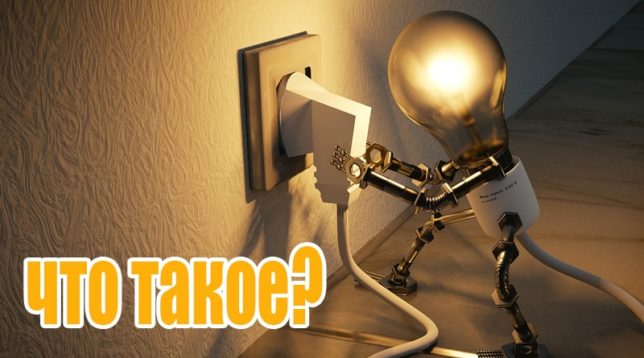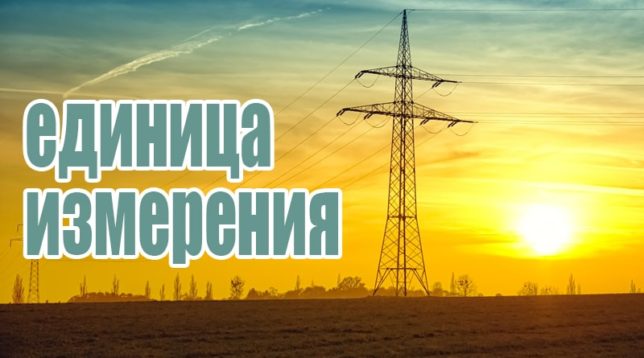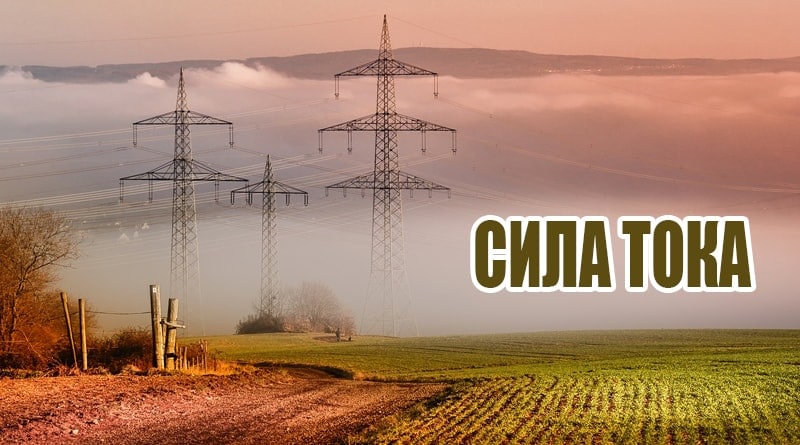Every person has an abstract concept of electric current. For an electrical appliance, a power source is a kind of air source for any breathing organism. But in these comparisons, the understanding of the nature of the phenomenon is limited, and only specialists understand the essence more deeply.
In the school curriculum, everyone takes a physics course, which describes the basic concepts and laws of electricity. A dry, scientific approach does not cause interest in children, so most adults have no idea what an electric current is, why it arises, how it has a unit of measurement, or how anything can move through immovable metal wires, and even make electrical appliances work.
In simple words about electric current

The standard definition from a school physics textbook succinctly describes the phenomenon of electric current. But frankly, you can fully understand this if you study the subject much more deeply. After all, the information is presented in another language - scientific. It is much easier to understand the nature of a physical phenomenon if you describe everything in a familiar language that is understandable to any person. For example, current in metal.
It should begin with the fact that everything that we consider solid and motionless is only in our view. A piece of metal lying on the ground is a monolithic motionless body in the human sense. For an analogy, imagine our planet in space, looking at it from the surface of Mars. The earth seems to be a whole, motionless body. If we approach its surface, it will become obvious that this is not a monolithic piece of matter, but a constant movement: water, gases, living things, lithospheric plates - all this moves non-stop, although this is not visible from far space.
Let's go back to our piece of metal lying on the ground. It is motionless, because we look at it from the side as a monolithic object. At the atomic level, it consists of constantly moving minute elements. They are different, but among all, we are interested in electrons, which create an electromagnetic field in metals that generates the same current. The word "current" must be understood literally, because when elements with an electric charge move, that is, "flow" from one charged object to another, then an "electric current" occurs.
Having understood the basic concepts, we can derive a general definition:
To understand the essence more precisely, you need to delve into the details and get answers to several basic questions.
Answers to the main questions about electric current
After the definition is formulated, several logical questions arise.
- What makes the current "flow", that is, move?
- If the smallest metal elements are constantly moving, then why is it not deformed?
- If something flows from one object to another, does the mass of these objects change?
The answer to the first question is simple. As water flows from a high point to a low one, so electrons will flow from a body with a high charge to a body with a low, obeying the laws of physics. And the “charge" (or potential) is the number of electrons in the body, and the more there are, the higher the charge.If contact is made between two bodies with different charges, the electrons from the more charged body will flow into the less charged. So there will be a current that will end when the charges of the two contacting bodies equalize.
To understand why the wire does not change the structure, despite the fact that there is constantly movement in it, you need to imagine it in the form of a large house in which people live. The size of the house will not change on how many people enter and exit it, as well as move inside. In this case, a person is an analogue of an electron in a metal - it moves freely and has no special mass in comparison with the whole building.
If electrons move from one body to another - why does the mass of bodies not change? The fact is that the weight of the electron is so small that even if you remove all the electrons from the body, its mass will not change.
What is a unit of current

To "calculate" the electric current, different units of measurement are used, we will analyze three main ones:
- Current strength.
- Voltage.
- Resistance.
If you try to describe the concept of current strength in simple words, it is best to imagine the flow of cars passing through a tunnel. Cars are electrons, and a tunnel is wire. The more cars pass at one moment in time through the cross section of the tunnel - the greater the current strength, which is measured by the device under the name "ammeter" in Amperes (A), and in the formulas is indicated by the letter (I).
Voltage is a relative value expressing the difference in the charges of the bodies between which current flows. If one object has a very high charge and the other is very low, then there will be a high voltage between them, to measure which a voltmeter and a unit called Volt (V) are used. In the formulas identified by the letter (U).
Resistance characterizes the ability of a conductor, conditionally copper wire, to pass a certain amount of current through itself, that is, electrons. The resistance conductor generates heat, spending part of the energy of the current passing through it, thereby lowering its strength. Resistance is calculated in Ohms (Ohms), and the letter (R) is used in the formulas.
Formulas for calculating current characteristics

Using three physical quantities, it is possible to calculate the characteristics of the current using Ohm's Law. It is expressed by the formula:
I = U / R
Where I is the current strength, U is the voltage in the circuit, R is the resistance.
From the formula we see that the current strength is calculated by dividing the voltage value by the resistance value. Hence we have the wording of the law:
Mathematically, other components can be calculated from this formula.
Resistance:
R = U / I
Voltage:
U = I * R
It is important to note that the formula is valid only for a specific section of the chain. For a complete, closed circuit, as well as other special cases, there are other Ohm's laws.
The effect of current on different materials and living things
Different chemical elements behave differently under the action of current. Some superconductors do not resist the electrons moving through them, without causing any chemical reaction. Metals with excessive stress for them can be destroyed, melt. Dielectrics that do not pass current do not enter into any interaction with it at all and thereby protect the environment from it. This phenomenon is successfully used by humans in the insulation of wires with rubber.
For living organisms, current is an ambiguous phenomenon. He is able to have both beneficial and destructive effects. People have long used controlled discharges for medicinal purposes: from light discharges stimulating brain activity to powerful electric shocks that can start a stopped heart and bring a person back to life. A strong discharge can lead to serious health problems, burns, tissue death, and even instant death. When working with electrical appliances, safety regulations must be observed.
In nature, you can find many phenomena in which electricity plays a key role: from deep-sea creatures (electric ramps), who can shock, to lightning during a thunderstorm. Man has long mastered this natural force and skillfully uses it, thanks to which all modern electronics work.
It should be remembered that natural phenomena can be both useful and harmful to humans. Studying from the school bench and further education helps people wisely use the phenomena of the world for the benefit of society.










